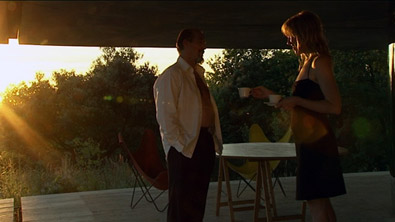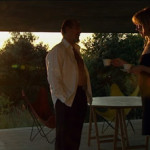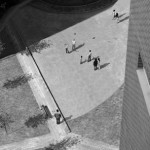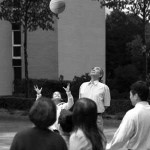By JAMES NADEAU
"The indiscernibility of the real and the imaginary, or of the present and the past, of the actual and the virtual, is definitely not produced in the head or the mind."
With the advent of digital technologies the line between video and photography has gotten more and more blurred. By reducing these art forms to their essential bits and bytes one could argue that their no longer is a difference between the two (analog video, unlike film, was always technologically different from photography). Both are simply ones and zeros in a digitized space that erodes any material difference between a photograph and a video. One is a motion image that has been stopped while the other is a series of still images strung together allowing our eyes and mind to create motion. This relationship was a given when looking at photography and film but video, being an entirely different process technologically, was always somewhat removed from these discussions. Digitization has changed everything. It is this relationship, this blurring, that Belgian artist David Claerbout explores in his first museum survey show now up at the List Visual Arts Center at MIT.
The exhibition comprises seven large projections each of which is superbly placed. The first gallery space holds Shadow Piece (2005), The Stack (2002), and Bordeaux Piece (2004). Shadow Piece was one of the more evocative videos. It consists of a static image of the entrance hall of a building, shot from above. The entrance is made of glass allowing for the play of shadows across the hall floor. A series of figures approach the doors and vainly try to enter. At first you are unaware that you are looking at a still image with the figures composited it but by watching over a period of time you realize that the shadows in the hall never move; figures come and go yet the door handles remain static.Shadow Piece is a quietly sublime piece. It evokes thoughts of Goddard and Resnais. It is a static image (perhaps even a stoic image) occasionally disturbed by the presence of humanity. The figures seem distorted and vulgar in contrast to the simplicity and beauty of the still space. This distortion is, of course, due to the compositing but it somehow works here. By not being "prefect" representations of people these figures disrupt the space, drawing our eye to its idealized simplicity. In this piece Claerbout conflates the moving and the static image in a way that speaks to our desire to both hold a moment and allow it to unfold.
Sections of a Happy Moment (2007), installed in the second gallery, pushes this idea even further. It is a video composed of a series of still images unfolding in a seemingly narrative manner. A Chinese family is gathered in a circle in the middle of a housing project. They stand still around a ball that has been thrown into the air. The figures are motionless. What moves is the perspective of the camera. We see them in close up, from above, from afar, etc. What first comes across as an investigation of a family dynamic soon transforms into a disturbing voyeuristic panoptic visual experience. These static images begin constructing a narrative of desire and intrusion. Is the happy family image merely a faade? These smiling happy faces are framed by the solemn, almost brutal, modernist housing structures that surround them.
The final gallery houses one of the most powerful and subtle videos. Four Persons Standing (1999) is simply that: four persons, two men and two women, standing frozen in a moment. It is a still image that is being projected as a video. Actually, it is a video in which the image never changes (at least while I was there, it is 60 minutes long so I clearly didn't see all of it). This is a piece that challenges the notion of what constitutes a video. Is a video predicated upon movement? The image is static but the light flickers and the frames fly by at 29.97 per second. Our mind wants to interpret the image as static yet the passage of time forces us to construct a narrative. What exactly is going on in the image? Why is the woman staring at the man? We want to know. It is our instinct for narrative that constructs a story as we stare at the image. We wait for movement, for plot, and where there is none we create it. We are under the constraints of time. It will pass whether we want it to or not. The image remains static but the passage of time (like the passage of code through the dvd player) is constant.
David Claerbout's work is reminiscent of the films of the French nouvelle vague. It is subtle, quiet and powerful. Much like Goddard and Chris Marker, Claerbout creates videos that challenge our senses not just viscerally but intellectually. It is beautiful and powerful work that begs revisiting. It asks us to reflect upon the nature of the image and its passage through time, through memory, through the projector.
- David Claerbout, Bordeaux Piece, 2004
- David Claerbout, Sections of a Happy Moment, 2007
- David Claerbout, Sections of a Happy Moment, 2007
"David Claerbout" is on view February 8 - April 6, 2008 at The List Visual Arts Center.
All images are courtesy of the artist and The List Visual Arts Center.







